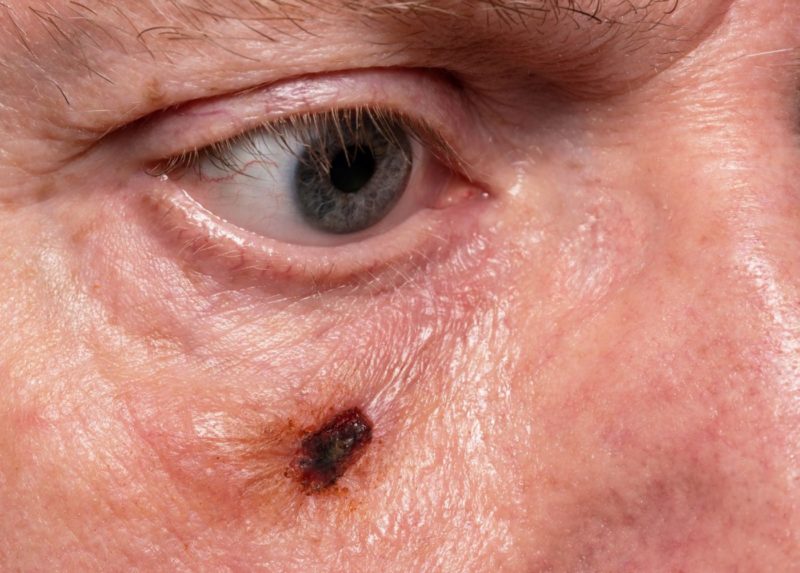Skin cancer often involves sun-exposed skin of the eyelid or adjacent face. Eyelid skin cancers occur most often on the lower eyelid but may be found anywhere around the eye. Usually, they appear as painless elevations or nodules or can present with redness, and scarring.
Occasionally, the eyelashes are distorted or missing. There may be ulcerations of the involved area, along with bleeding, crusting, and/or distortion of the normal skin structure. Such findings need to be evaluated and may require a biopsy to confirm the diagnosis of skin cancer.
Causes of Skin Cancer
Cancer Excessive exposure to sunlight is the single most important factor associated with skin cancers on the face, eyelids, and arms. Fair-skinned people develop skin cancers far more frequently than dark-skinned people. Skin cancers may also be hereditary.
Types of Skin Cancer
The most common types of skin cancers are basal cell carcinoma and squamous cell carcinoma. Both types enlarge locally and usually do not spread (metastasize) to distant parts of the body. However, with time, if not completely removed, either type will invade adjacent structures. It is important to know that basal and squamous cell carcinomas are usually relatively slow growing. Thus, when detected early and treated promptly and appropriately, there is a better chance of removing the tumor completely and minimizing the amount of tissue affected by the carcinoma. Sebaceous gland carcinoma and malignant melanoma are more serious forms of skin cancer because they may spread (metastasize) to other parts of the body. These types of skin cancer require prompt, aggressive treatment because of the threat of early spread and a higher mortality rate. Malignant melanoma can but it is well known but uncommon type of eyelid cancer. These are usually best treated with surgical removal with microscopic assuredness that the tumor is resolved completely.
Treatment
There are two very important principles in the management of eyelid skin cancers–complete removal and reconstruction. Complete removal of the tumor is critical to minimize the possibility of recurrence, which is even more difficult to manage. The surgeon may remove the tumor and have a pathologist check the tissue margins (“frozen section”) to be sure the tumor is completely removed. In another method, a dermatologic surgeon excises the tumor in a special way (“Mohs technique“) and prepares microscope slides to ensure total removal of cancer.
Once the tumor has been completely removed, reconstructive surgery is usually necessary. Occasionally, the wound can heal on its own through a process called granulation, but the cosmetic outcome may be unpredictable. More commonly, reconstructive surgery is performed to make a new eyelid or repair the defect. Many excellent techniques are available to reconstruct almost any surgical defect. The operation will be specifically tailored to the defect that is present following the removal of the tumor. Regardless of technique, the goals remain the same: to reconstruct the eyelid so that it functions properly, protects the eye, preserves vision, and has a satisfactory cosmetic appearance An effort is always made to minimize scarring and obtain optimal cosmetic results. After surgery, the healing process may take six months to one year. Once the wound has healed, follow-up is necessary to be sure that the skin cancer does not recur. Should there be the development of new cancer, it can then be detected early and treated promptly.







